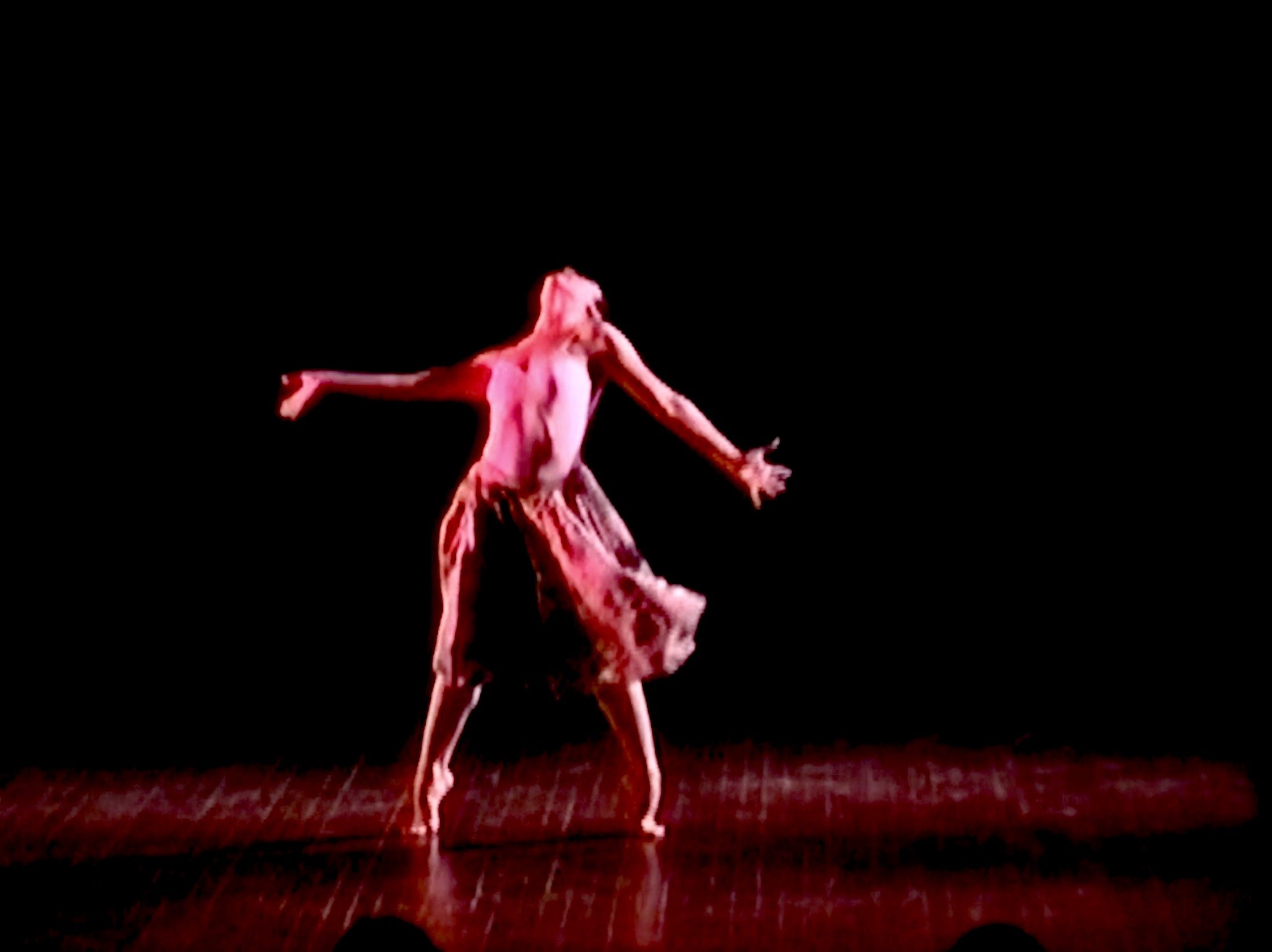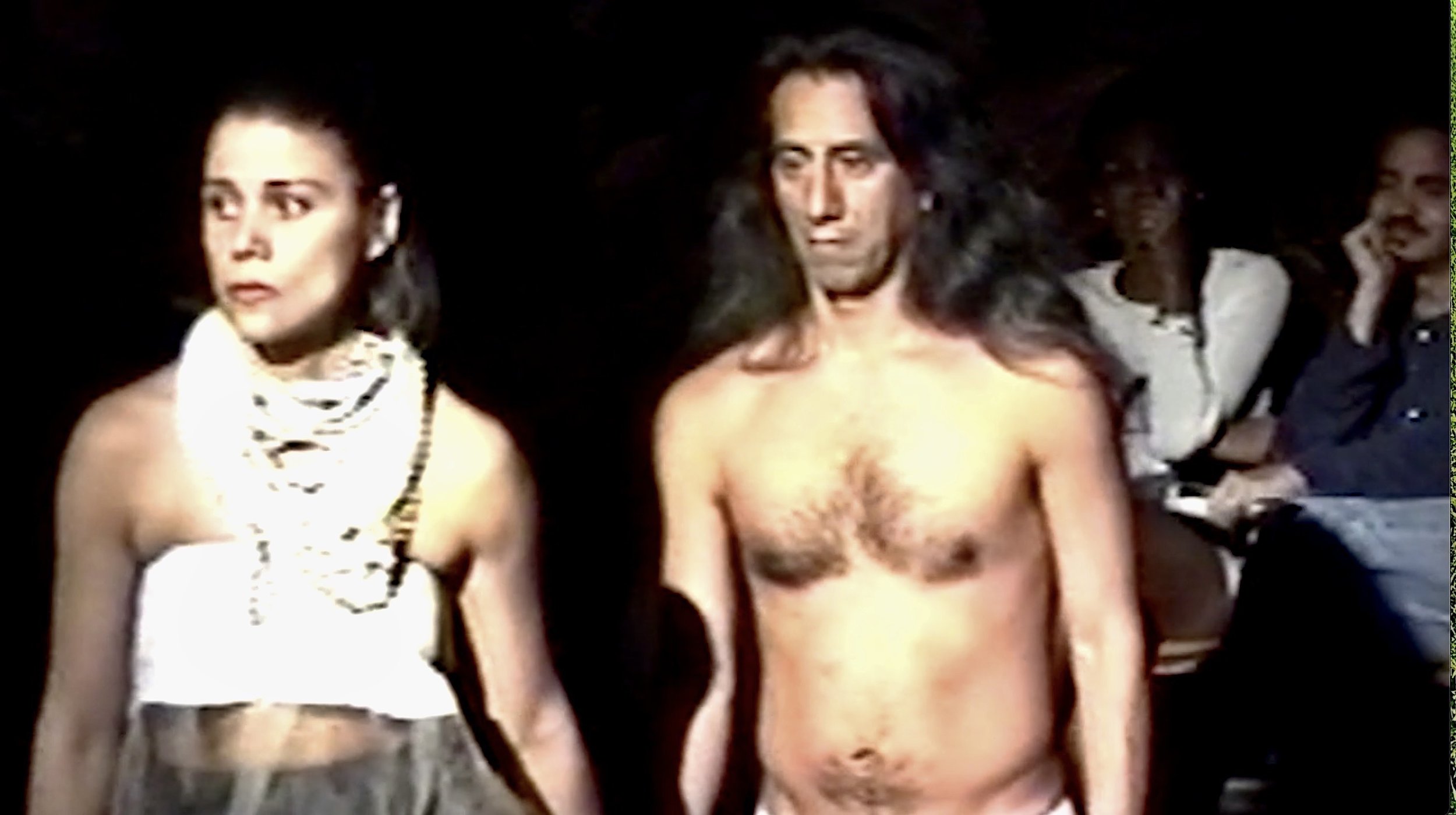Rompeforma: Defying Norms and Reimagining Performance on Stages and Cinema
¡Fenomenal! Rompeforma 1989-1996 is an award-winning documentary directed and produced by dancers, choreographers, and educators Viveca Vázquez and Merián Soto that delves into the transformative world of the Rompeforma festival during those pivotal years at the end of the 20th century in Puerto Rico. The Rompeforma festival celebrated dance, movement, visual arts, and performances that defied traditional disciplinary norms, challenged boundaries, and embraced experimental fugues.
Screened on January 31 at the New York Public Library for the Performing Arts in an event series aptly called The Dance Historian Is In, the documentary explores a transnational cultural movement—a bold, artistic endeavor that rippled through the archipelago and beyond. The Rompeforma film extends the festival’s principles by unearthing a mesmerizing archive emphasizing borderlessness, transnational thought, and performance flows. In alignment with the festival's ethos, the documentary elevates the femme, queer, and migrant Black body as a dynamic laboratory for artistic contestation, showcasing both challenges and triumphs through testimonies of creators and performers.
¡Fenomenal!: Rompeforma 1989-1996 shows groundbreaking artists engaging in an open practice before an eager critical audience. Rompeforma artists design choreographies that defy conventional representations, resisting predefined social scripts and aesthetics of movement. Emphasizing processes of embodiment and mundane intensity, the performers challenge traditional storytelling, privileging thematic configurations and visceral abstractions over structured plots. Rompeforma focused on the experimental and avant-garde as both praxis and ultimate goals. Moving forward with this perspective, Puerto Rico became a vigorous geography and a destination for radical experimenters challenging monolithic representative regimes in cultural production.
“Emphasizing processes of embodiment and mundane intensity, the performers challenge traditional storytelling, privileging thematic configurations and visceral abstractions over structured plots. ”
The documentary further delves into the performative practices that confront various forms of violence in the archipelago, including ecological, gender-based, race-based, linguistic, and colonial violence. Remarkably, these practices do not propose an alienation from Puerto Rican and diasporic realities. Instead, they prompt a profound reconsideration of how to manifest the raw ingredients of everyday life. The notion of the “unfinished” act in Rompeforma reflects the scarcity of resources and the corruption prevalent in Puerto Rico and academia. The “unfinished” pieces mirror the artists’ challenges and the archipelago’s cultural environment.
Within the archive of pieces, Vazquéz and Soto’s choreographies stand out, as do those of choreographer Petra Bravo, who had a retrospective in one of the festival’s editions. While each choreographer has distinct aesthetics and feminist concerns, recurrent motives in their choreographies are fragmented movements, disparate assemblages of artifacts, video projections and words, and, from a resonant point of view, dissonant noises and loose sonic atmospheres. Additionally, the directors foreground various recurrent members of Viveca Vázquez's Taller de Otra Cosa productions. The documentary provides a retrospective look at the beginnings of these unconventional performers, tracing their roots to Rompeforma.
Teresa Hernández, a central figure in the documentary, engages in germinal explorations through character-driven performances—a concept Hernández learned through Rompeforma. Her approach involves costumes and props as integral components of the mise en scène, revealing charged power structures and schemes of subjection. Self-identifying as an “artista del escenario” (a stage artist), Hernández has forged a consistent and experimental career. Her work often showcases portraits of eccentric femme characters, intricate movement sequences, multimedia inception, and interactive broken narratives focusing on Puerto Rican social ills. In her evolution as an artist, Hernández has increasingly embraced place-based performance pieces, positioning the environment as a complex phenomenon with its own stories and voices.
The documentary also introduces the early days of Eduardo Alegría, a performer, dancer, and singer known for leading two celebrated queer bands—Superaquello and Alegría Rampante. Alegría (who also composed the music for the documentary) has crafted musical and highly compound acts that create queer imagery peppered with absurdism. Keeping with Alegría’s self-fashioning processes, as in the Rompeforma performance piece “Lucy,” the artist addresses gender as a deficient social construct, prompting unsettling reflections. At the same time, Alegría explores queerness as fluidity and unstable projections of self and libido.
The Rompeforma festival plays a crucial role in amplifying the voices and experiences of Black Puerto Rican artists, a group often overlooked within the art historical canon both in the 1990s and arguably still today. An exemplary figure is Javier Cardona, whose performative movement practice delves into concepts of Blackness, masculinity, and Caribbean geographies. Cardona, who was a recurrent mover at Rompeforma, has created site-specific movement pieces, including videos, that center on the relationship between his queer Black body and surrounding ecologies, offering a unique perspective on the intersection of embodiment and the environment.
Awilda Sterling's contributions to Rompeforma are paramount in exploring Blackness in Puerto Rican visual and scenic arts. Sterling challenges the conventional narrative of African heritage as a mere relic of the past, positioning African-infused movement as a powerful means of promoting ongoing forms of marronage. Sterling does not assimilate Blackness into a multicultural identity. Instead, it is a core element mobilizing individual and collective consciousness and Afro-diasporic epistemologies.
As the documentary showcases, Cardona and Sterling’s movement sequences underscore the Black body’s vibrancy, creating emotional and political routes that defy traditional folkloric expectations. They recenter rhythm and undulation in their performances, not as ingredients of popular musical forms but as elements enabling unexpected trajectories for the body.
“While these local artists are in the foreground, at the same time, the documentary shows how the festival promoted borderless drifts, particularly within the context of the diaspora.”
While these local artists are in the foreground, at the same time, the documentary shows how the festival promoted borderless drifts, particularly within the context of the diaspora, with artists like David Zambrano, Manuel Alum, and Marcus Kuiland-Nazario, among others. Their pieces investigate the transnational and multilingual experiences and question the capitalist logic of globalization. In highlighting both artists on and off the archipelago, the documentary challenges borders—whether water, land, state, or colonial—asserting that they constrain the full spectrum of artistic expression in the archipelago and the hemisphere. Instead, Vázquez and Soto highlight the meaning-making and world-making capabilities of the performers involved in Rompeforma, creating a venue for critical engagement with Caribbean, Latin American, and diasporic realities.
The Nuyorican intervention in Rompeforma distinctly highlighted the broader diasporic frame, offering a perspective on three now canonical Nuyorican poets. Instead of viewing them through the lens of the problematic pursuit of national validity, Rompeforma provides an inclusive space to showcase their radical poetics, intimately tied to Black Power and Indigenous Peoples movements, women of color feminism, and the experimental scene of downtown NYC. Notably, Miguel Algarín, an intellectual and entrepreneur, played a central role with his manager partner Lois Griffith in establishing the Nuyorican Poets Café, starting from his living room and expanding to various iconic Loisaida spaces. His presence, loud and disruptive to imperial claims, set the tone for a site of radical confluences.
The Nuyorican poets featured in Rompeforma brought diverse elements to the festival. Pedro Pietri, a Dadaist who enjoyed playing with jocular rhymes, infused anarchic linguistic experimentalism into the mix while discussing the traumas of the Vietnam War. Sandra María Esteves, a Dominican-Boricua poet, contributed crucial women of color poetics and critique of identity, highlighting femme experiences often neglected in discussions about the 1970s movement. What characterized these poets was their embodiment of open draft poetics and an impromptu bomba-like call-and-response, essential to their Nuyorican aesthetics. Moreover, the Nuyoricans in Rompeforma proposed an avant-garde perspective aligned with the inventions and declarations of the city street. Rejecting elitist ruptures, they aimed to reach a rebellious callejera audience. This dynamic interaction brought a participatory element to their performances, fostering community and shared experience with Puerto Rican audiences in San Juan.
Furthermore, Guillermo Gómez Peña and Coco Fusco's contribution to Rompeforma inquired into the discursive and militarized violence at the Mexico-U.S. border—a migration context not conventionally associated with Puerto Ricans. Their performance becomes a powerful examination of the crude spectacle of the border, portraying it as a dehumanizing site that uncovers the pain that Mexican, Central American, and Latin American people experience. Gómez Peña and Fusco's work takes Indigenous rituals and reformulates them, creating a collision with the noise of mass media and countering the demonization of migrants perpetuated by pundits. Through this lens, they unpack the contesting views surrounding immigration discussions in the U.S. From patriarchy to militarism, linguistic ostracism, religious persecution, and nationalist restrictive boxes, their work becomes a multifaceted exploration of the oppressive forces within immigration discourse. Fusco and Gómez Peña confront the harsh realities of border politics and offer an analysis of the interconnected systems of power that shape the experiences of migrants in the region.
Lastly, the intricacy of Rompeforma’s artistic landscape unfolds in the documentary, revealing how visual art played a pivotal role as the atmospheric backbone of this creative ecosystem. The installations showcased throughout the documentary were not static displays. They served as platforms for constructing cohesive sensorial threads within the marathon of performances and dances. This interconnectedness highlighted the inter/transdisciplinarity of the events, championing juxtaposition and montage-like interpretation—a philosophy fundamental to Rompeforma. Created by artists like Pepón Osorio, Dhara Rivera, Rafael Trelles, Antonio Martorell, and Miguel Villafañe, these immersive setups provided a rich palette of materials, textures, artifacts, and concepts, fostering a convergence with the assorted elements presented in the live acts. Beyond their aesthetic appeal, the installations operated as satellite spaces, promoting dialogue and interaction among the audience, performers, and organizers.
In this last regard, the documentary highlights the significance of fostering critical openness within the Rompeforma festival, urging the audience to actively construct and interpret meaning rather than just passively consume performances. This emphasis on active participation frames Rompeforma as a learning workshop. The notion of performers as audience members further underscores this educational aspect, positioning the festival as a taller platform for works in progress. Consequently, the festival offered participants an exclusive preview of potentially larger performative pieces in their nascent stages.
Vázquez and Soto’s documentary sheds light on varied perspectives about the experimental and fragmented nature of Rompeforma. Notably, it captures the contrasting expectations among attendees. While some anticipated more finalized pieces, others embraced the festival's inherent brokenness as essential to its out-of-the-box character. This diversity in perception emphasizes the subjective nature of artistic experience and the festival’s ability to elicit various reactions from people—some very heated, like the ones that open the film. Despite these differences, the documentary reveals a common thread among all participants—the recognition of the highly arousing nature of the pieces. The festival emerges as a collective psychogeographic panorama, capturing those years’ undaunted spirit. I see the Rompeforma legacy in more recent Puerto Rico–based performance festivals like Asuntos Efímeros and Me Ocupo organized by Mickey Negrón or Helen Ceballos’s Mescolanza. Akin to what the documentary portrays, these current performance festivals reclaim experimental arts to break through stage paradigms, offering new cultural visions unbound from social habits and disciplinary formalities.
Dr. Rojo Robles is a Puerto Rican writer, filmmaker, and scholar specializing in Latin American, Latinx, and Afro-diasporic literature, cinema, and culture. He holds degrees in Theater (BA), Comparative Literature (MA), and Latin American and Latinx cultures (MPhil; Ph.D.) and is an Assistant Professor at the Black and Latinx Studies Department at Baruch College, CUNY. As a scholar, Dr. Robles has published articles in various journals like SX Salon| Small Axe Project, Voces del Caribe, the Puerto Rico Review, Taller Electric Marronage, Revista Cruce, Revista Iberoamericana, and Transmodernity. Currently, he is working on a book and a series of articles exploring Afro-Diasporican maroon poetics and cinegraphic literature. He co-hosts the Latinx Visions podcast and is the co-director of the Black Studies Colloquium.





